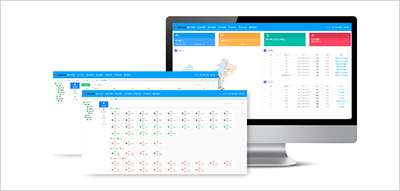recording centralized management platform solution
with the development of information technology, the users of the recording industry have become larger and larger, and the demand has also become more intelligent. the operation is convenient, stable and reliable, and recording systems for cloud computing and big data analysis can be realized. mingdao recording centralized management platform is developed to help enterprises conduct intelligent management. the platform adopts b/s architecture and modular design, providing multi-level rights management, storage redundancy, voice encryption, and recording data security modules. full cloud, flexible response to the needs of cross-regional recording collaborative management, to provide users with a safe and reliable service experience.
its distributed and cross-regional management features enable senior management to access recording data from all departments and divisions of the company in any country or region, so that they can keep abreast of company operations. the platform can realize a variety of recording lines and unified monitoring of multiple devices. the platform provides recording and monitoring management for analog, digital telephones, digital trunks, and voip phones, and can provide high-quality recording services for converged communication platforms and emergency dispatch platforms.
platform parameters
● suitable for all kinds of window operating systems, installation and use more convenient.
● 3000 recording devices access capacity.
● the line monitoring capacity is 96000 lines.
● speech codec g.711 a_law/μ_law, g.729, adpcm.
● management web & mobile app.
● permissions are set at level 5.
● provides 1 n recording redundancy backup.
● analog line recording: analog phone, pickup, microphone, headset.
● digital trunk recording: ss7, ss1, isdn, q.sig.
● voip recording: sip2.0 protocol, h.323 protocol, and mgcp protocol.
● digital phone recording: avaya/tadiran/siemens/alcatel/nec/nortel............................................................................................................................................................................................................................................................................................................
related products
medou cloud recording management platform
platform advantage
compared with other recording platforms on the market, mingdao cloud recording management platform has the following advantages:
1, digital chip processing recording, recording sound quality;
2, according to customer needs, can set different time periods, automatically upload recording to the headquarters server;
3, powerful data statistics function, display statistical results in different ways such as charts;
4, the unique fault alarm, the detection line is broken, the opportunity to send an alarm, while sending to the person in charge by e-mail, to ensure recording security;
5. the industry's first cloud recording system compatible with multiple hardware;
6. the first cloud recording system in the industry that implements digital line, analog line, ip line, wireless intercom, car intercom, live recording, mobile phone recording, unified upload management;
7, free to provide secondary development interface, seamless integration with customer software.
typical application
platform features
a variety of recording startup methods: pressure control, voice control, key control, polarity reversal, and continuous recording; the device can record general analog telephones, digital telephones, mobile phones, conference sites, radio and radio interphones, and so on.
2、componentized architecture
for the device type, simply select the corresponding component, flexibly combine and reduce the construction cost. new devices only need to add the corresponding components without having to repurchase the platform.
3、high-quality recording files
the high-fidelity original sound file is reproduced, the recording is clear, safe and reliable, and reading is quick and convenient.
4、rights allocation
decentralization: different management rights for different user groups. subdomain: administrators in different regions manage different devices. time sharing: you can set the time for the account to operate.
5、unified report
bar charts, pie charts, line charts, and other report models show rich and varied forms of preset recording status, storage capacity, and other rich reports to meet the needs of most users.
6、recording encryption
the use of its own encryption algorithm to encrypt the recording file, effectively guarantee the security of the recording file.
7、unified view
the unified topology of the entire network equipment is presented to help the operation and maintenance personnel to grasp the status of the global device status and link status in real time.
8、real-time monitoring
web end: supports real-time voice monitoring, and performs voice monitoring on any area and any device's designated channel. app: supports ios/android mobile monitoring in real time, and keeps track of the call status at any time.
9、multiple deployment modes
distributed deployment, low cost, easy maintenance, and effective protection of management system performance requirements; dual-machine deployment, 1 1 redundancy disaster recovery, guaranteed system 7*24 uninterrupted service, hierarchical collaborative management, to meet the enterprise's hierarchical management model.
10、performance monitoring
the interface and channel status indicators are collected in real time to analyze the internal operating status of the recording device. the cpu and memory usage of the device are collected in real time to prevent abnormal devices and performance thresholds in advance. the abnormal changes in key indicators are monitored in real time.
11、centralized alarm
for all devices on the entire network, the alarms are displayed in a unified manner. the alarm information is clear at a glance. shielding, merging, suppression, and elimination of redundant alarms prevent duplicated invalid alarms from causing maintenance difficulties. various alarm notification methods such as voice, email, sms, and panel display can be used at any time. check the fault information.
application area
widely used: government agencies, courts, banks, procuratorates, p2p finance, securities, public security, hotels, restaurants, railway transportation, electricity, customs, insurance, contact centers, the automotive industry, aviation, prisons, education and training, medical services.
recommended download
central recording management platform.doc |
|
|
